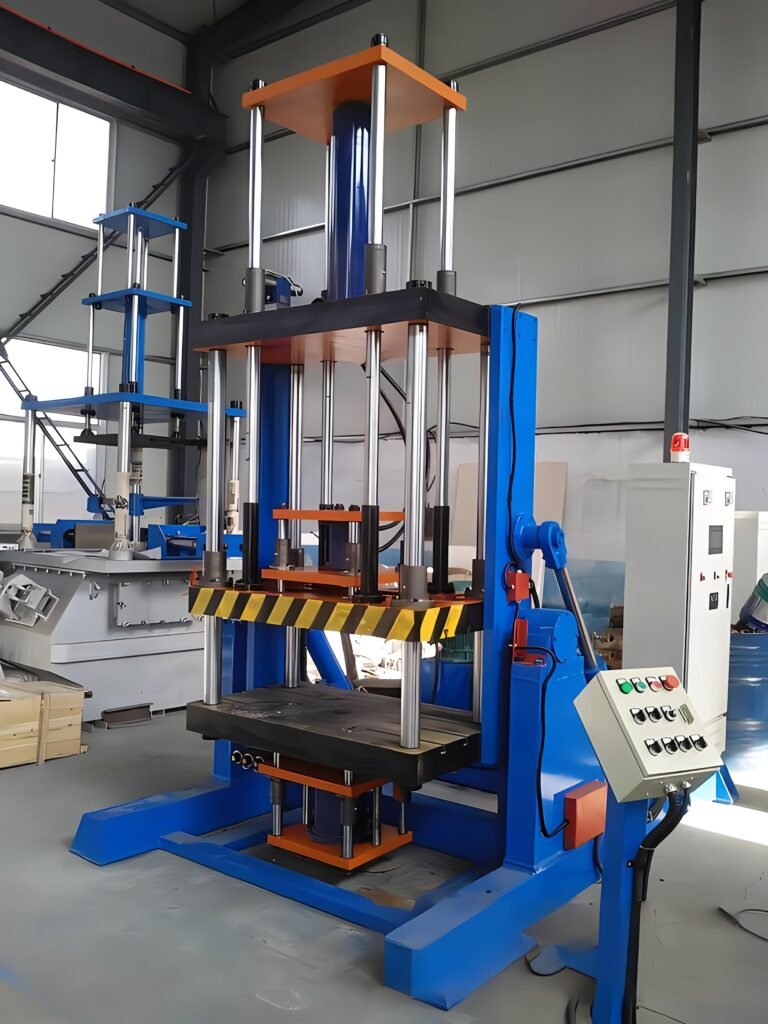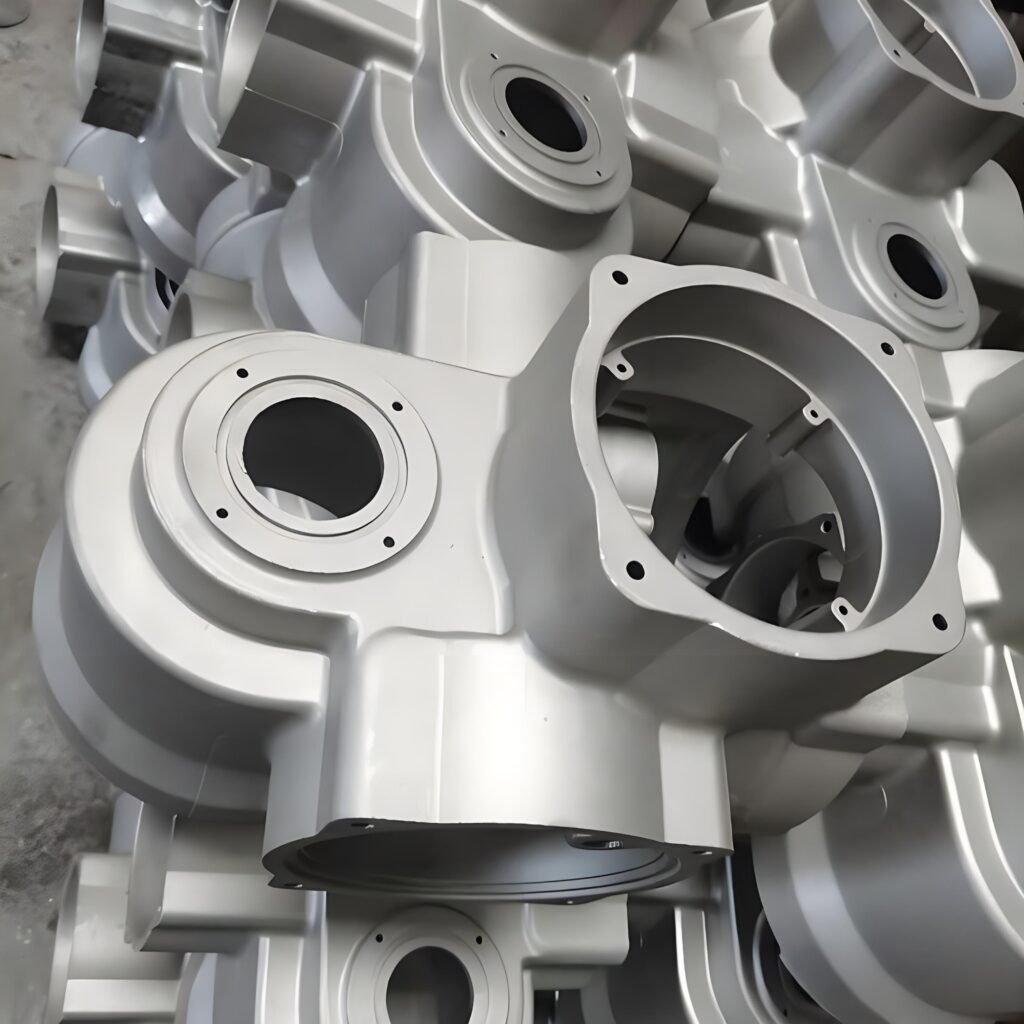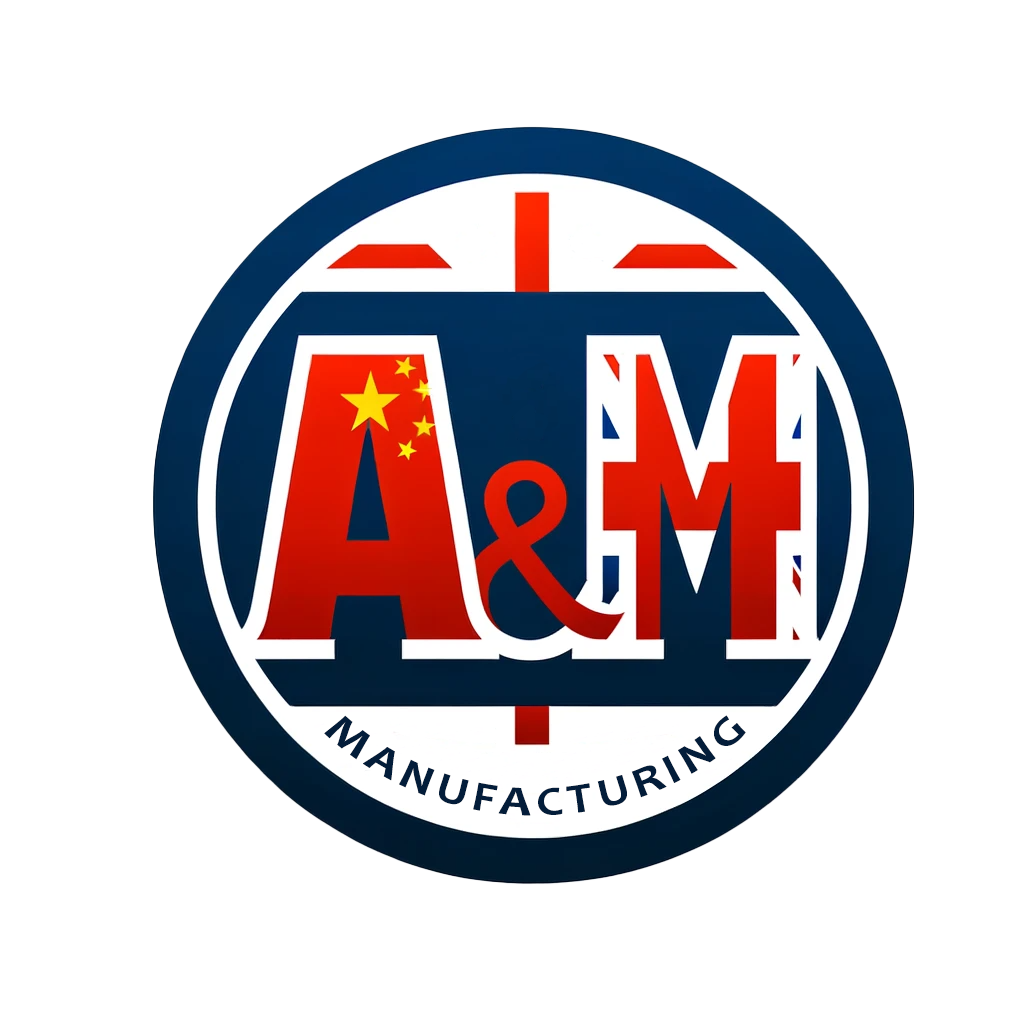Address
2 Porters Mews
Codicote, Hertfordshire SG4 8US
Send An Enquiry
info@manufacturingsolution.co.uk
Gravity die casting, also known as permanent mould casting, is a metal casting process that involves pouring molten metal into a permanent mould under the force of gravity, without the use of high pressure, vacuum, or centrifugal force. This method is distinguished by its use of reusable moulds made of metal, typically steel or cast iron, offering a balance between the excellent surface finish and dimensional accuracy of more costly casting processes like investment casting, and the economic benefits of sand casting.
1. Mould Design and Fabrication
The process begins with the design and fabrication of the mould. Moulds for gravity die casting are made from durable materials, usually steel or cast iron, to withstand the high temperatures of molten metal repeatedly. These moulds are designed in two halves that can be opened and closed to remove the cast part. They may also include cores or inserts to create internal cavities or undercuts in the final casting.
2. Mould Preparation
Before casting, the mould is prepared by applying a release agent to its surfaces to facilitate easy removal of the casting and to protect the mould’s surface. The mould is then preheated to a specific temperature to promote better flow of the molten metal and reduce thermal shock, enhancing the quality of the casting.
3. Melting and Pouring
The metal, selected based on the desired properties of the final casting, is melted in a furnace. Once it reaches the correct temperature, the molten metal is carefully poured into the mould. The gravity ensures that the metal fills the mould cavity completely, creating the shape of the desired part. Pouring must be controlled to minimise turbulence and the inclusion of gases or other defects.
4. Cooling and Solidification
After the molten metal has been poured, it begins to cool and solidify within the mould. The time required for this step varies based on the metal alloy used and the thickness of the casting. Proper cooling is crucial to achieving the desired microstructure and mechanical properties in the final product.
5. Mould Opening and Casting Removal
Once the metal has solidified, the mould is opened, and the casting is removed. This step may require the use of ejector pins or other mechanisms if the casting has intricate features or if it adheres tightly to the mould.
6. Trimming and Cleaning
Excess material from the casting, such as the metal in the gates, runners, and overflows, is trimmed away. The casting may also undergo surface cleaning processes like shot blasting to remove any scale and improve its appearance.
7. Heat Treatment (If Necessary)
Depending on the material and application, the casting may undergo heat treatment processes such as annealing, hardening, or tempering to achieve the desired mechanical properties.
8. Finishing and Inspection
Finally, the casting may require additional finishing operations, including machining, grinding, or painting, to meet the final specifications. The completed part is then inspected for dimensional accuracy, surface quality, and any internal defects, ensuring it meets all required standards and specifications.
High-Quality Surface Finish
One of the standout advantages of gravity die casting is its ability to achieve a high-quality surface finish directly out of the mould. The smooth surface of the metal moulds is transferred to the cast components, reducing or eliminating the need for extensive surface finishing. This not only improves the aesthetic qualities of the parts but can also enhance their performance in applications where surface finish is critical.
Excellent Dimensional Accuracy
The precision of the metal moulds used in gravity die casting results in excellent dimensional accuracy of the cast parts. The stability and durability of the moulds allow for consistent casting dimensions, making this process ideal for producing parts that require tight tolerances and fit specifications.
Rapid Production Cycle
Gravity die casting enables a quicker production cycle compared to sand casting and other traditional methods. The metal moulds heat up and cool down quickly, allowing for faster solidification of the metal and quicker release of the cast part. This rapid cycle time is beneficial for medium to high volume production runs, offering an efficient turnaround on parts.
Strength and Durability
The process of gravity die casting allows for parts with denser microstructure, providing superior strength and durability compared to those produced by other casting methods. The controlled pouring and solidification process minimises porosity and can produce parts that are stronger and more reliable, which is particularly beneficial for structural components.
Reusable Moulds
Unlike sand casting, where the mould is destroyed after each use, gravity die casting uses permanent moulds that can be used for multiple casts. This reusability significantly reduces the per-unit cost of parts, especially in medium to high volume production, making it a cost-effective solution over time.
Versatility in Materials
Gravity die casting can be used with a wide range of non-ferrous metals and alloys, including aluminium, zinc, and copper alloys. This versatility allows manufacturers to select the optimal material based on the mechanical properties, corrosion resistance, and weight considerations of the final application.
Reduced Need for Secondary Operations
The combination of excellent surface finish and dimensional accuracy often reduces the need for secondary machining operations. While some parts may require additional machining for tight tolerances or specific features, many components can be used as-cast, which further reduces production costs and time.
Here at A & M Manufacturing Company Ltd, we take pride in our ability to work with cutting-edge technology and equipment, including automatic dosing furnaces, tilt pouring machines, thermal imaging and monitoring equipment, as well as automated core setting and mould assembly. These advanced facilities and equipment allow for more efficient production while significantly reducing human errors and labour costs.
We have 2 affiliated gravity casting foundries with production lines capable of producing over 6000 tons of castings per year. Together with our experienced engineers, who have over 30 years of manufacturing experience, we offer castings of the highest quality while maintaining competitive pricing. Our gravity die casting parts are widely used in various industries such as automotive, aerospace, marine, medical, oil & gas, railway systems, and more.
Experience and Capabilities: With extensive experience in the manufacturing sector and foundry industries, A & M Manufacturing Company Ltd specialises in gravity die casting techniques. Our partnered foundries have the capacity to produce over 6000 tons annually.
Quality: We uphold the highest standards of quality. All of our partnered foundries hold ISO 9001 and IATF 16949 certifications, and all products undergo thorough inspection by both our foundries and ourselves in the UK.
Flexible Supplying Terms: We understand the challenges posed by long production lead times, which can extend to several months in some industries. That’s why we offer our clients access to our UK stockholding facilities, reducing production lead times to a matter of days and providing long-term benefits.
All-In-One Management: Dealing with multiple suppliers can lead to trust issues, quality control issues, and communication barriers due to language differences, resulting in delays and product failures. But rest assured, we handle the entire manufacturing process seamlessly, from initial drawings to mass production and delivery to the customer’s doorstep.


Gravity die casting is key in several industries for making durable, precise components with complex shapes and tight tolerances.
Each of these sectors benefits from the efficiency, precision, and quality finish that gravity die casting offers, making it a preferred choice for manufacturing high-performance and critical-use components.
